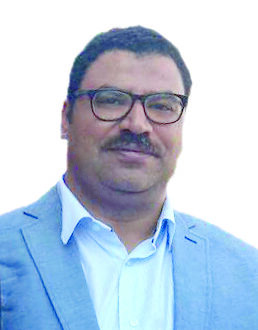The history of mankind has been plagued by an almost continuous chain of various armed conflicts that have caused horrendous damage to society.
However, such atrocities are always followed by moments of great regret and a desire to compensate and repair the damage. Post-conflict reconstruction can be seen as an important part of the healing process, consolidating peace, promoting security, and achieving sustainable socio-economic development. This was the cause in many different incidents throughout history, whether in Marshall Plan after World War II, post-war Iraq, or Afghanistan.
However, looking at Gaza, with its unprecedented destruction and a unique set of challenges, we discover the necessity of a new distinct approach to address the complexities involved in its reconstruction. The daunting task of rebuilding Gaza is marred with a high level of devastation, unclear governance, and expected blockade, which underlines the need for a tailored and comprehensive solution.
The level of destruction in Gaza following recent conflicts has been unparalleled since World War II. According to estimates by the United Nations Development Programme, over 70 per cent of housing has been destroyed, leaving more than 37 million tons of debris. Such grim statistics indicate that Gaza’s human development index has regressed by 40 years, wiping out 40 years’ worth of investment in education, health, and other essential services. The estimated cost of post-war reconstruction will be at least $50 billion, a colossal sum that demands swift and substantial international assistance.
The challenges expected to emerge during Gaza’s reconstruction are further compounded by political uncertainties and restrictions on supplies. Gaza’s governance is fragmented between the Palestinian Authority (PA) in the West Bank and Hamas in Gaza, making co-ordination and decision-making arduous. This fragmentation complicates the allocation of resources and the implementation of reconstruction plans. Moreover, Israel’s blockade on Gaza has severely limited the entry of construction materials, humanitarian aid, and essential supplies. Overcoming these obstacles requires focused efforts to establish stability, determine clear governance, and alleviate the blockade’s impact on reconstruction.
Environmental degradation is another complexity to consider. The repeated conflicts and inadequate infrastructure in Gaza exacerbate environmental issues such as water contamination and damage to arable land. Reconstruction efforts must incorporate environmental sustainability principles to prevent further degradation.
Security concerns in Gaza pose risks to the reconstruction process. The precarious security situation can disrupt activities, deter investment, and undermine trust-building and reconciliation efforts. Addressing these security concerns is essential for sustainable reconstruction and development.
Human rights and accountability are integral to the reconstruction process. Gaza’s reconstruction should address human rights violations and ensure accountability for past atrocities. This includes addressing issues such as displacement, property rights, and the rights of refugees, which are deeply intertwined with the reconstruction process.
Lastly, achieving lasting peace and stability in Gaza requires reconciliation and political unity among Palestinian factions. However, longstanding divisions and rivalries complicate efforts toward sustainable reconstruction and development.
To address these complexities, a comprehensive and coordinated approach involving all relevant stakeholders is necessary. This includes the Palestinian Authority, Hamas, Israel, regional actors, and the international community. Humanitarian needs must be prioritised, good governance promoted, and inclusive and sustainable development fostered in Gaza.
Rebuilding Gaza is a monumental task, but it is crucial for the future of the Palestinian people. It requires the collective efforts of the international community, political cooperation, adequate funding, and a comprehensive approach that addresses the multi-dimensional complexities of the situation.






Discussion about this post